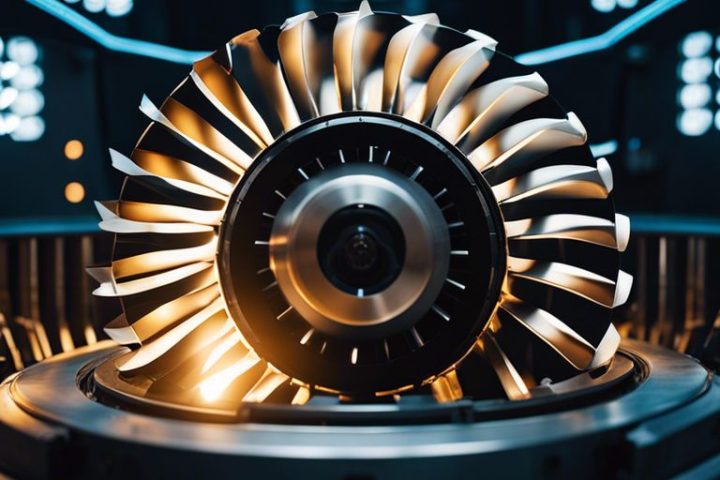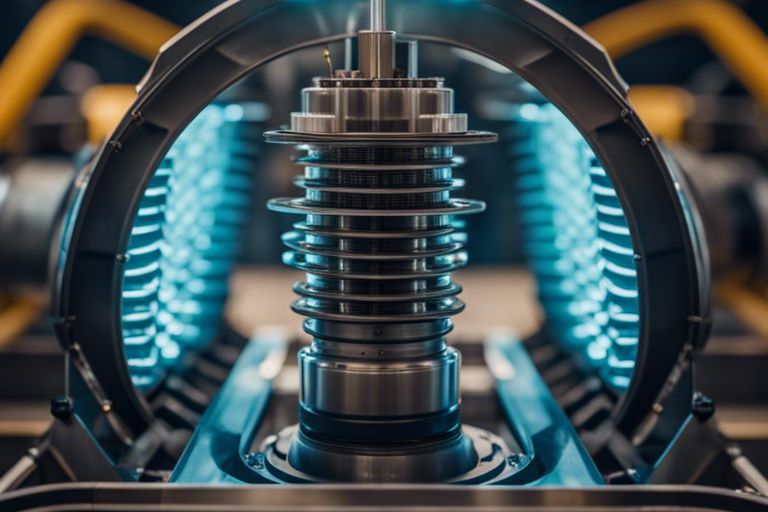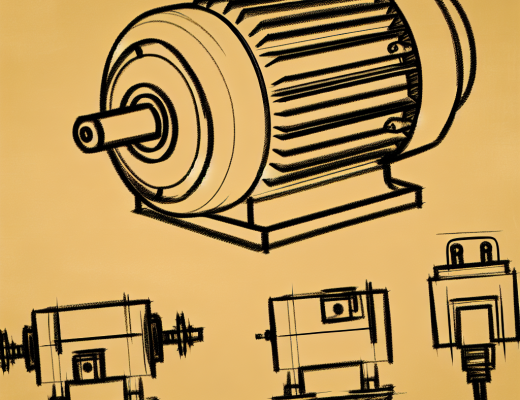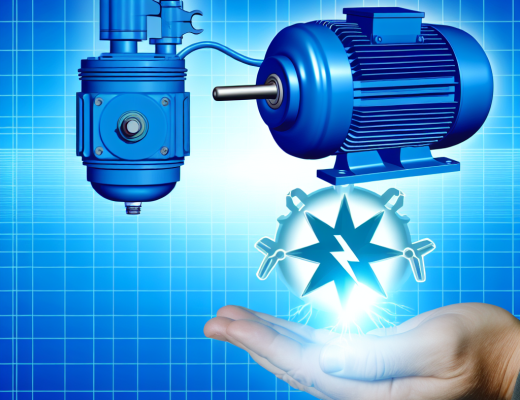Efficiency is crucial when it comes to gas turbine power generation. In this blog post, you will learn how to optimize the performance of your gas turbine to ensure maximum output and cost-effectiveness. By implementing key strategies and maintenance practices, you can improve overall efficiency, extend the lifespan of your equipment, and reduce operational risks. Let’s probe the world of gas turbine power generation and unlock the secrets to maximizing efficiency like a pro.
Fundamentals of Gas Turbine Power Generation
Principles of Gas Turbine Operation
For an efficient gas turbine power generation system, it is crucial to understand the basic principles of its operation. Gas turbines work on the principle of converting energy from fuel into mechanical power through a series of processes. Air is drawn into the compressor, where it is pressurized before entering the combustion chamber. Fuel is then injected and ignited, causing high-temperature, high-pressure gas to expand and pass through the turbine, generating power. This mechanical energy can be used to drive electrical generators to produce electricity.
Components of a Gas Turbine System
Operation of a gas turbine system involves several key components working together seamlessly to produce power efficiently. These components include the compressor, combustion chamber, turbine, and generator. The compressor plays a vital role in pressurizing the incoming air, while the combustion chamber is where fuel is mixed with air and ignited. The turbine then extracts energy from the hot gases to drive the compressor and the generator. Each component must function properly for the gas turbine system to operate efficiently and safely.
Generation of power in a gas turbine system relies on the intricate interplay of its components and the adherence to strict operational and maintenance protocols. It is crucial to monitor various parameters such as temperature, pressure, and fuel flow to ensure the system operates within safe limits. Efficient power generation is achieved when all components work harmoniously to convert fuel into electricity with minimal losses.
Factors Affecting Efficiency
There’s a range of factors that can impact the efficiency of gas turbine power generation. Understanding these factors is crucial in optimizing the performance of your power plant. Here are some key considerations:
Thermodynamic Cycles and Efficiency
Any discussion about gas turbine efficiency must begin with an understanding of the basic thermodynamic cycles involved. The Brayton cycle is the fundamental cycle for gas turbines, where air is compressed, heated, expanded through the turbine, and then exhausted to produce power. Efficiency is greatly influenced by how well these processes are executed within the gas turbine system.
Effects of Ambient Temperature and Humidity
The ambient temperature and humidity can significantly impact gas turbine efficiency. Higher ambient temperatures can reduce the power output of the turbine, while increased humidity levels can affect combustion efficiency. Recognizing and accounting for these effects is crucial in maximizing overall efficiency.
| Impact of Ambient Temperature | Impact of Humidity |
| Higher temperatures can reduce power output efficiency. | Increased humidity levels can affect combustion efficiency. |
The ambient conditions in which a gas turbine operates play a critical role in its overall efficiency. Another important consideration is the inlet air temperature, which affects the density of the air entering the compressor, thus impacting the entire power generation process.
Influence of Fuel Type and Quality
Factors such as the type and quality of the fuel used in gas turbines can have a significant impact on efficiency. Plus, using low-quality fuels can lead to combustion inefficiencies and increased emissions, affecting both performance and environmental impact.
Recognizing the importance of using high-quality fuel and optimizing its combustion process is vital in achieving maximum efficiency in gas turbine power generation.
Design Optimization for Maximum Efficiency
Despite the complexity of gas turbine power generation systems, design optimization is crucial to achieving maximum efficiency. This involves careful consideration of aerodynamics, heat transfer, and materials selection in order to improve overall performance and reliability.
Aerodynamic Design Considerations
Any gas turbine design aimed at maximizing efficiency must take into account aerodynamic considerations. This includes optimizing the compressor and turbine blade profiles, as well as the overall flow path through the engine. By reducing losses and improving airflow dynamics, you can achieve higher efficiency levels and better power output.
Heat Transfer Enhancement Techniques
The implementation of heat transfer enhancement techniques is imperative for improving the overall efficiency of gas turbine power generation. By utilizing advanced cooling technologies and heat-resistant materials, you can effectively manage high operating temperatures and reduce thermal losses. This directly translates to improved performance and longer component lifespan.
The efficiency of a gas turbine engine is highly dependent on its ability to effectively transfer heat and maintain thermal equilibrium. By incorporating innovative heat transfer enhancement techniques, you can optimize performance and reliability, ultimately leading to increased efficiency and reduced maintenance costs.
Materials Selection for High-Temperature Applications
| Materials Selection | Benefits |
| Advanced Alloys | Improved temperature resistance, ensuring reliability at high operating temperatures. |
| Ceramic Coatings | Enhanced thermal protection and corrosion resistance, extending component lifespan. |
| Composite Materials | Reduced weight and increased durability, contributing to overall efficiency and performance. |
The selection of materials for high-temperature applications is critical in ensuring the efficiency and longevity of gas turbine power generation systems. Advanced alloys, ceramic coatings, and composite materials offer unique benefits such as improved temperature resistance, thermal protection, and enhanced durability. By carefully choosing the right materials for specific components, you can maximize efficiency and minimize the risk of premature failure.
Operational Strategies for Efficiency Improvement
Many operational strategies can be implemented to maximize efficiency in gas turbine power generation. Two key strategies are optimal load management and scheduling, as well as real-time monitoring and control systems.
Optimal Load Management and Scheduling
For optimal load management and scheduling, it is vital to operate the gas turbine at its peak efficiency. By adjusting the load based on the energy demand, you can ensure that the turbine operates at the most efficient point on its performance curve. This involves balancing the generation output with the demand to avoid wasteful energy production.
Real-Time Monitoring and Control Systems
Any modern gas turbine power plant should be equipped with real-time monitoring and control systems. These systems continuously track the performance of the turbine and make automatic adjustments to optimize efficiency. They provide you with **real-time** data on various operating parameters, allowing you to identify and address issues promptly.
RealTime monitoring and control systems also enable remote operation and diagnostics, reducing the need for manual intervention. This leads to improved operational efficiency and overall cost savings in the long run.
Predictive Maintenance and Fault Detection
Control systems can also incorporate predictive maintenance and fault detection algorithms to anticipate and prevent potential issues. By analyzing data trends and performance indicators, these systems can **proactively** identify signs of wear or malfunction before they cause downtime or performance degradation.
Fault detection systems are designed to **quickly** pinpoint abnormalities in the turbine operation and alert you to take corrective actions. By addressing faults promptly, you can prevent serious damages and ensure the continued efficiency and reliability of your gas turbine.
Advanced Technologies for Enhanced Efficiency
Unlike conventional methods, there are advanced technologies that can further enhance the efficiency of gas turbine power generation. Below are some key advancements:
- Application of Additive Manufacturing Techniques
- Development of Advanced Materials and Coatings
| For | Application of Additive Manufacturing Techniques |
| Your | Advances in 3D printing allow for the creation of complex parts that are lighter, more durable, and have improved performance. |
Integration of Renewable Energy Sources
Renewable energy sources, such as solar and wind, can be integrated into gas turbine power generation systems to improve overall efficiency.
A significant benefit of integrating renewable energy sources is the ability to reduce greenhouse gas emissions and reliance on fossil fuels. You can optimize the use of these clean energy sources to complement the operation of gas turbines, resulting in a more sustainable and environmentally friendly power generation system.
Development of Advanced Materials and Coatings
Technologies
| This | Advanced materials and coatings can improve the performance and lifespan of gas turbine components, resulting in increased efficiency and reduced maintenance costs. |
This includes the use of innovative materials that can withstand high temperatures and corrosive environments, as well as coatings that enhance heat transfer and reduce friction. By incorporating these advanced materials and coatings into gas turbine design, you can achieve higher efficiency and reliability in power generation.
Economic and Environmental Impacts of Efficiency Maximization
Cost-Benefit Analysis of Efficiency Improvement Measures
Environmental: When considering the cost-benefit analysis of efficiency improvement measures in gas turbine power generation, it is crucial to weigh the upfront investment against the long-term savings. Upgrading to more efficient technologies may require a significant initial capital outlay but can result in substantial savings in fuel costs and operational expenses over the lifespan of the equipment. Additionally, improved efficiency can lead to reduced emissions and environmental impact, aligning with sustainability goals.
Reduction of Greenhouse Gas Emissions and Carbon Footprint
Environmental: As gas turbines become more efficient, they produce fewer greenhouse gas emissions per unit of electricity generated, which directly contributes to a lower carbon footprint. By optimizing the combustion process and heat recovery systems, you can significantly reduce the environmental impact of gas turbine power generation.
Impact on Grid Stability and Power Quality
Quality: Maximizing efficiency in gas turbine power generation not only benefits your bottom line but also enhances grid stability and power quality. By improving control systems and response times, you can help ensure a more reliable and consistent power supply for your operations. This can reduce the risk of outages and voltage fluctuations, ultimately enhancing the overall performance of the electrical grid.
Impacts: Maximizing efficiency in gas turbine power generation has far-reaching benefits, ranging from cost savings to environmental stewardship and improved grid stability. By investing in efficiency improvement measures, you are not only enhancing your operational efficiency but also positively impacting the environment and the reliability of the power grid.
Summing up
From above, you have learned about the importance of maximizing efficiency in gas turbine power generation. By implementing technologies like blade cooling systems, advanced combustion techniques, and inlet air cooling, you can maximize the efficiency and output of your gas turbine power plant. This not only helps in reducing operational costs but also contributes to a more sustainable energy generation process.





